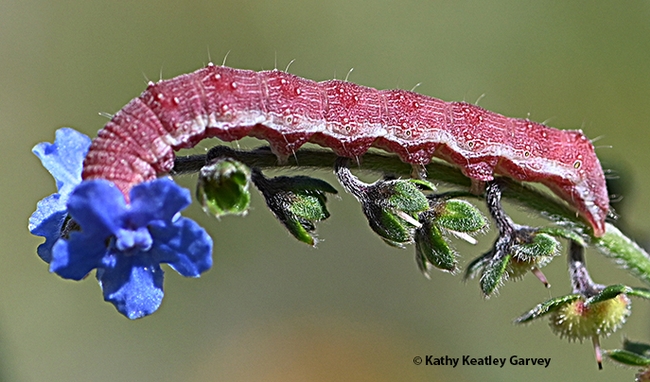
But it's not going to happen.
So here we are in our Vacaville pollinator garden, looking at the Chinese forget-me-nots. We see honey bees, leafcutter bees, syrphid flies, lady beetles, cabbage white butterflies, and other critters foraging. It's National Pollinator Week.
And then we see a pinkish caterpillar munching away on one of the sky-blue blossoms. He's a very hungry caterpillar. Did we say "hungry?" He's ravenous. Absolutely ravenous!
It's a tobacco budworm, Heliothis virescens, as identified by UC Davis distinguished professor Art Shapiro, an expert on Lepidopterans who has monitored butterfly populations in central California since 1972--and also studies moths. (See his butterfly website.)
In its adult stage, the tobacco budworm will become a moth. (If we let it!)
In its larval stage, it can vary in color from pale green to pink to dark red to maroon, according to a University of Florida entomological fact sheet.
"Tobacco budworm is principally a field crop pest, attacking such crops as alfalfa, clover, cotton, flax, soybean, and tobacco," the University of Florida entomologists related. "However, it sometimes attacks such vegetables as cabbage, cantaloupe, lettuce, pea, pepper, pigeon pea, squash, and tomato, especially when cotton or other favored crops are abundant. Tobacco budworm is a common pest of geranium and other flower crops such as ageratum, bird of paradise, chrysanthemum, gardenia, geranium, petunia, mallow, marigold, petunia, snapdragon, strawflower, verbena, and zinnia."
Naturalist-photographer Greg Kareofelas, a Bohart Museum of Entomology associate, remembers rearing one that he plucked from his geraniums a few years ago. We are not going to rear this one. Tobacco budworms are not our buddies.
This afternoon honey bees tried to push the pest away. They did not succeed.
Tomorrow the California scrub jays nesting and chirping in the cherry laurels probably will!
Attached Images:
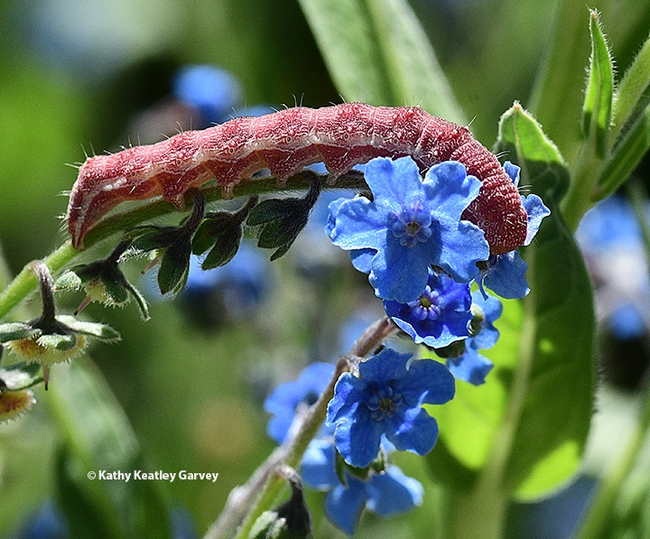
A tobacco budworm, Heliothis virescens, munching on Chinese forget-me-nots in a Vacaville garden. (Photo by Kathy Keatley Garvey)
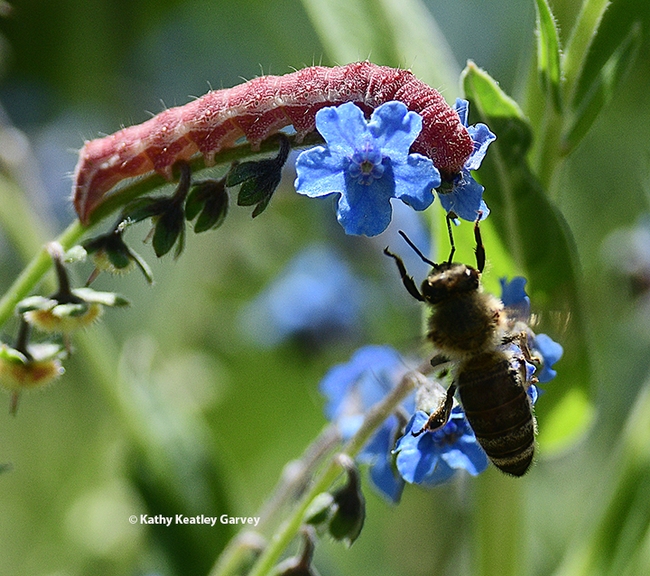
A honey bee arrives and wants the same flower that the tobacco budworm is munching on. (Photo by Kathy Keatley Garvey)
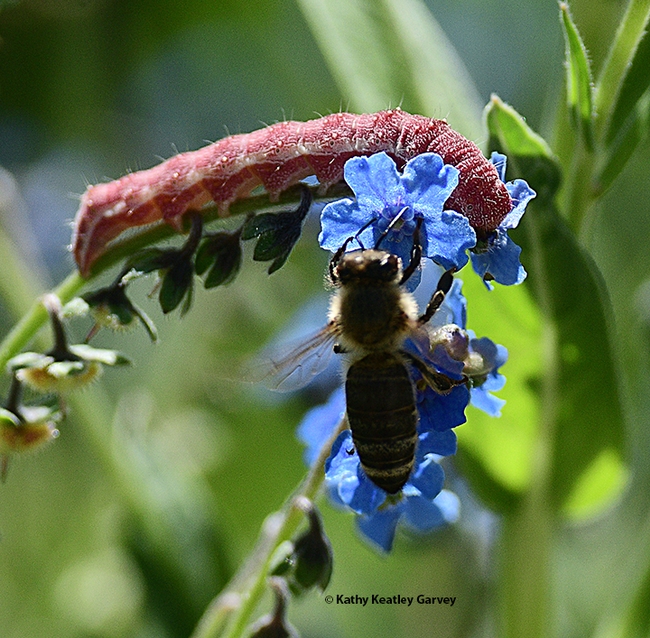
It's a "no go" for sharing. The honey bee opts for a different blossom as the tobacco budworm continues munching. (Photo by Kathy Keatley Garvey)
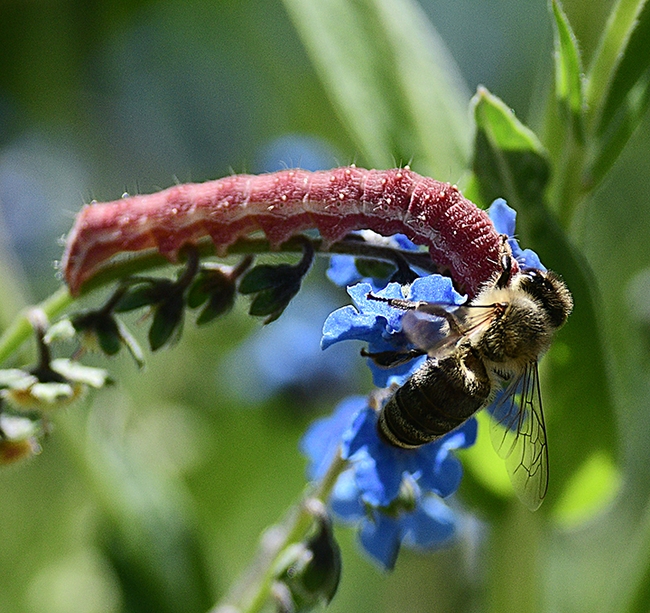
The honey bee tries to push her way in but the tobacco budworm refuses to budge. (Photo by Kathy Keatley Garvey)